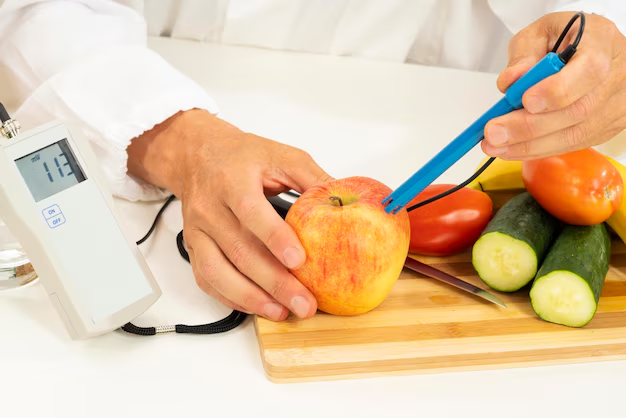Beans and Diabetes: Can Beans Be a Healthy Choice for Diabetics?
When it comes to managing diabetes, diet plays a crucial role. Among the vast array of food options, beans have sparked considerable interest due to their nutritional profile. But the question remains: Are beans good for diabetics? In this article, we'll delve into the different aspects of beans, exploring their benefits, potential risks, and how they can fit into a balanced diet for managing diabetes.
Why Beans?
Beans, often categorized under legumes, are a broad family of foods that include kidney beans, black beans, chickpeas, lentils, and many more. They are a staple in many diets around the world, known not just for their versatility but for their rich nutrient content.
Nutrient Powerhouse
Beans are packed with proteins, fiber, vitamins, and minerals. Their high protein content makes them an excellent alternative to meat, particularly for vegetarians and vegans. The abundance of fiber aids in digestion and can be a significant ally in blood sugar control. Additionally, beans boast an array of essential vitamins and minerals such as B vitamins, iron, and potassium.
Key Nutrients:
- Protein: Supports muscle health and repair.
- Fiber: Crucial for digestive health and helps manage blood sugar levels.
- Vitamins and Minerals: Essential for overall well-being and maintaining bodily functions.
The Glycemic Index: Beans at a Glance
Understanding Glycemic Index
The glycemic index (GI) is a measure that ranks foods according to their impact on blood sugar levels. Foods with a low GI are absorbed more slowly, resulting in a gradual rise in blood sugar, which is beneficial for people with diabetes.
Beans and Their GI
Most beans score low on the glycemic index, making them a favorable choice for blood sugar management. The complex carbohydrates present in beans are digested more slowly than simple sugars, preventing sudden spikes in blood sugar levels.
Benefits of Low GI Foods for Diabetics:
- Steady Energy Levels: Prevents rapid energy crashes.
- Stabilizes Blood Sugar: Reduces the risk of complications associated with diabetes.
- Improves Satiety: Helps manage weight by keeping you fuller for longer.
Health Benefits of Beans for Diabetics
Blood Sugar Regulation
Beans can be a powerful tool for controlling blood sugar. Their low GI value and high fiber content are particularly beneficial, as they aid in stabilizing blood glucose levels. Regular consumption of beans can lead to more stable blood sugar levels over time.
Heart Health
People with diabetes are at a higher risk of developing heart disease. The nutrients in beans can support heart health by improving cholesterol levels and reducing blood pressure.
Weight Management
Beans are low in calories and high in protein and fiber, which can support weight loss and management — a vital aspect of diabetes control. Feeling full and satisfied can prevent overeating and aid in maintaining a healthy weight.
Potential Risks and Considerations
Despite the numerous benefits, there are a few considerations to keep in mind when incorporating beans into a diabetic diet.
Portion Size
While beans are healthy, they should be consumed in moderation. Overeating can lead to excessive calorie intake, which might counteract their benefits.
Preparation and Additives
Preparation methods can affect the healthiness of beans. Avoid beans that come with added sugars or unhealthy fats, often found in canned varieties with added sauce.
Practical Tips for Including Beans in a Diabetic Diet
Choose Wisely
Opt for fresh or canned beans without added sodium or sauces. If using canned beans, rinse them thoroughly to remove excess sodium.
Cooking Tips
Incorporate beans into a variety of dishes to avoid monotony. Use them in soups, salads, casseroles, or even as a protein base in vegetarian meals.
Balance Your Meal
Pair beans with other low GI foods to maintain balanced blood sugar levels. Vegetables, whole grains, and lean meats can complement a bean-based meal effectively.
Exploring Different Types of Beans
Black Beans
Rich in fiber and protein, black beans can slow down the absorption of sugar into the bloodstream, beneficial for maintaining blood sugar levels.
Kidney Beans
These beans offer a robust nutritional profile, with high levels of protein and fiber. They're ideal for hearty meals like stews and chili.
Chickpeas
Also known as garbanzo beans, chickpeas are versatile and can be used in salads, roasted as snacks, or blended into hummus.
Lentils
Lentils are quick to cook and nutritious, making them a convenient choice. They're an excellent meat substitute in various dishes, providing both protein and fiber.
Key Takeaways
Here’s a quick summary of why beans could be beneficial for diabetics:
- 🥦 Rich in Fiber and Protein: Helps stabilize blood sugar and supports heart health.
- 👨🍳 Versatile and Nutritious: Fits easily into different meals and complements a balanced diet.
- ⚖️ Low Glycemic Index: Provides slow energy release and maintains blood sugar balance.
- 🥗 Supports Weight Management: Encourages fullness, reducing overeating.
- 🥄 Easy to Prepare: Minimal preparation with canned or dried beans, just be cautious of added ingredients.
Final Insight
Beans can indeed be a valuable addition to a diabetic diet, offering numerous benefits from blood sugar regulation to heart health. By understanding the right types and ways to prepare them, individuals with diabetes can enjoy not just the nutritional benefits, but also the culinary versatility that beans offer. As with all dietary choices, balance is key, and incorporating beans into a well-rounded meal plan can aid in the effective management of diabetes.
